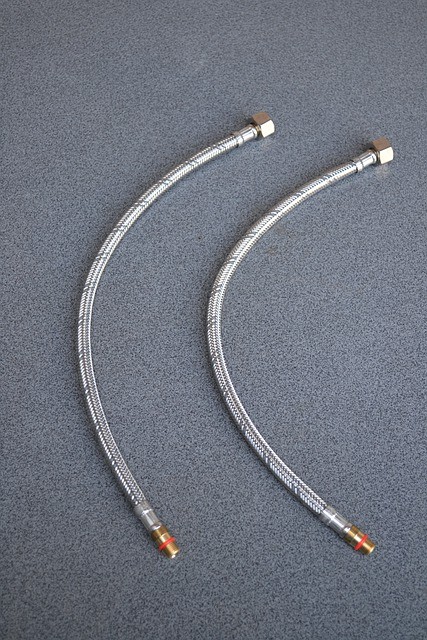What causes a flexi-hose to burst?
Let’s talk about flexi-hoses! Flexible hoses, also known as flexi-hoses or flexible connectors, are used in a large percentage of Australian households. First introduced to the Australian market 30 years ago, they quickly became popular. In fact, if you check your laundry, toilet, or under your kitchen sink, you’ll no doubt have one if not multiple flexi-hoses featured.
As with all things great, flexi-hoses come alongside major risks to your home. Choosing the wrong flexi-hose for the job, buying a dodgy flexi-hose, or simply not maintaining your flexi-hoses properly can cause the pipe to burst. This will end in a heavily flooded home and a lot of regrets.
What are Flexi-hoses?
Flexi-hoses are an essential part of many households and many plumbing systems, but what are they and what do they do?
Flexi-hoses are hoses made up of rubber tubes that have been surrounded by layers of braided stainless steel. Some flexi-hoses are also wrapped in plastic to prevent dust, dirt, grime and chemicals from affecting the quality of the flexi-hose.
These materials make for a flexible and bendy hose which is primarily used for connecting water, taps and fixtures. They are able to fit in small or awkward spaces as a result of their flexibility, which is why flexi-hoses are most often found in laundries, toilets and under kitchen sinks. Flexi-hoses are made to relieve pressure from pipes as they absorb ground movement and hydraulic shock.

How long do flexi-hoses last & how often should flexi-hoses be replaced?
Worried about the lifespan of your flexi-hoses? On average, flexi-hoses will last between 5-10 years, but ideally should be replaced by a professional every 5 years to avoid the risk of them bursting.
Getting a professional to regularly check your flexi-hoses for warning signs is very important!
Warning signs you may be able to spot on your flexi-hoses include:
- Bulging
- Fraying areas
- Kinks
- Rust on the braided area
It is also vital that you check the warranty period and expiry dates of your flexi-hoses.
If your flexi-hoses have exceeded their lifespan or are displaying warning signs, contact our licensed and insured plumbers today.
How do I stop my flexi-hose from leaking?
Flexi-hoses can and occasionally will leak.
Reasons/ causes for leaking flexi-hoses can include:
- Improper installation
- It’s a poor-quality hose
- Your flexi-hose has reached its shelf-life.
If your flexi-hose is leaking, the best and safest option is to have it immediately replaced by a professional. If you have a leak in your flexi-hose, here’s what we suggest:
- Clean up excess water to avoid further damage to the surrounding area/s.
- Inspect the flexi-hose and try to determine where the leak originated from.
- Get in touch with pure Plumbing Professionals
- Place down a bowl or bucket to collect the water whilst waiting for one of our professional team members.
If your situation is of more urgency, our 24-hour emergency plumber services are available 7 days a week and have the resources to be at your door in no time.
What causes a flexi-hose to burst?
In 2017, data was released by numerous insurance companies showing that burst flexi-hoses are responsible for more than 20% of all water damage claims in Australia! This means flexi-hoses rank as the number 1 water damage claim.
So why do they burst?
As we know, flexi-hoses are made up of a rubber tube and surrounded by braided stainless steel. As the rubber lining expands under pressure, the stainless steel is there to hold it in place and prevent it from expanding excessively. However, the braided layers of steel may fail and break as a result of warning signs such as bulging, rust spots, etc. When the stainless steel breaks, it allows the rubber to expand outside of the stainless steel sleeve and with enough pressure, the rubber will then rupture and burst.
Danger can originate from the installation of the flexi-hose, especially when people try to DIY install a flexi-hose without seeking professional advice beforehand.
Things that happen during installation that can cause your flexi-hose to burst include:
- Twisting or stretching of the hose
- The nuts at either end of the connectors are either too loose or too tight
- The flexi-hose is in a high humidity environment, which may cause corrosion to the stainless steel braiding.
Did you know, that a burst flexi-hose is able to leak up to 1500 litres of water per hour? This can leave your home irreversibly damaged.
Tips for choosing the right flexi-hose for you
Our top tips for choosing the right flexi-hose:
- Seek professional advice.
- Don’t go for the cheapest flexi-hose.
- Choose a high-quality stainless steel flexi-hose & high-quality brass barb fittings.
- Choose a flexi-hose with thick, strong braiding.
- Opt for the flexi-hoses that have a plastic coating for an extra layer of protection against corrosion.
- Always ensure the flexi-hose you choose clearly displays the WaterMark certification.
Sources: Sydney Morning Herald
